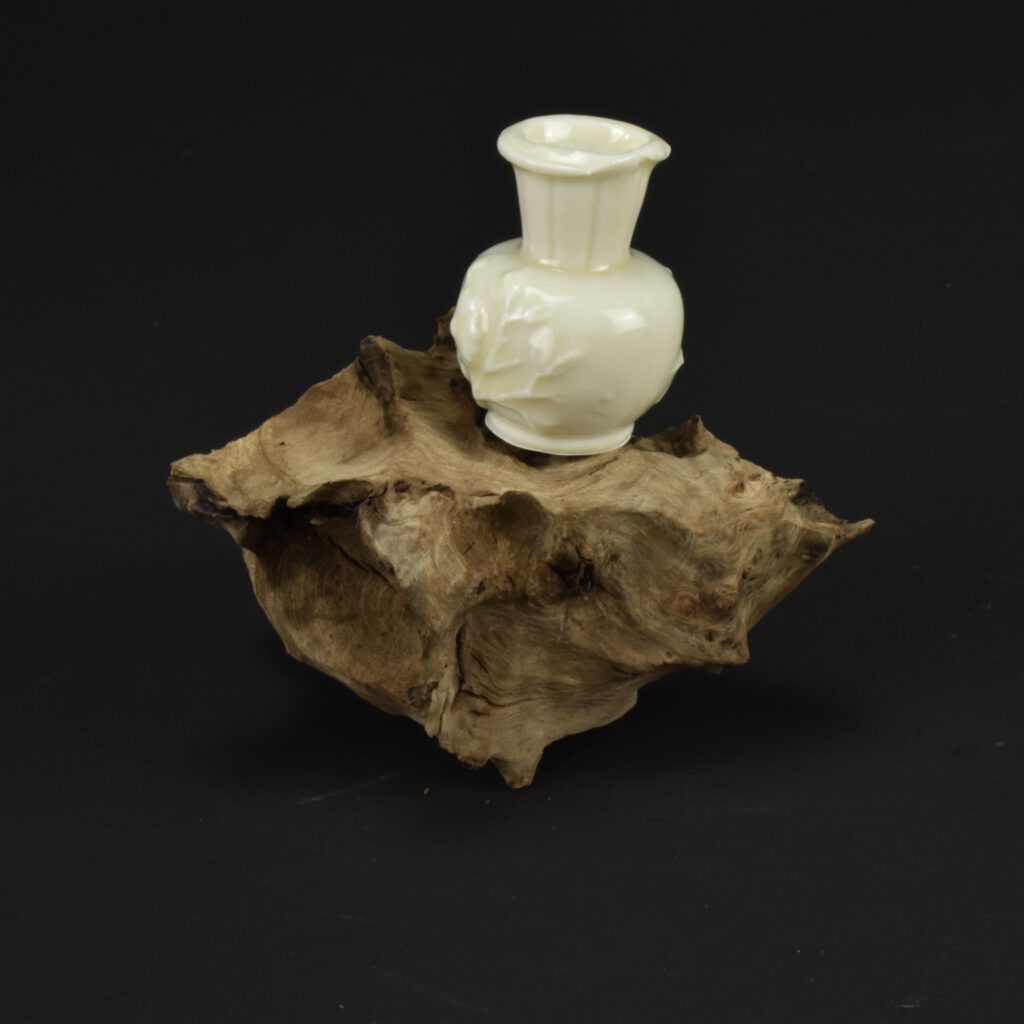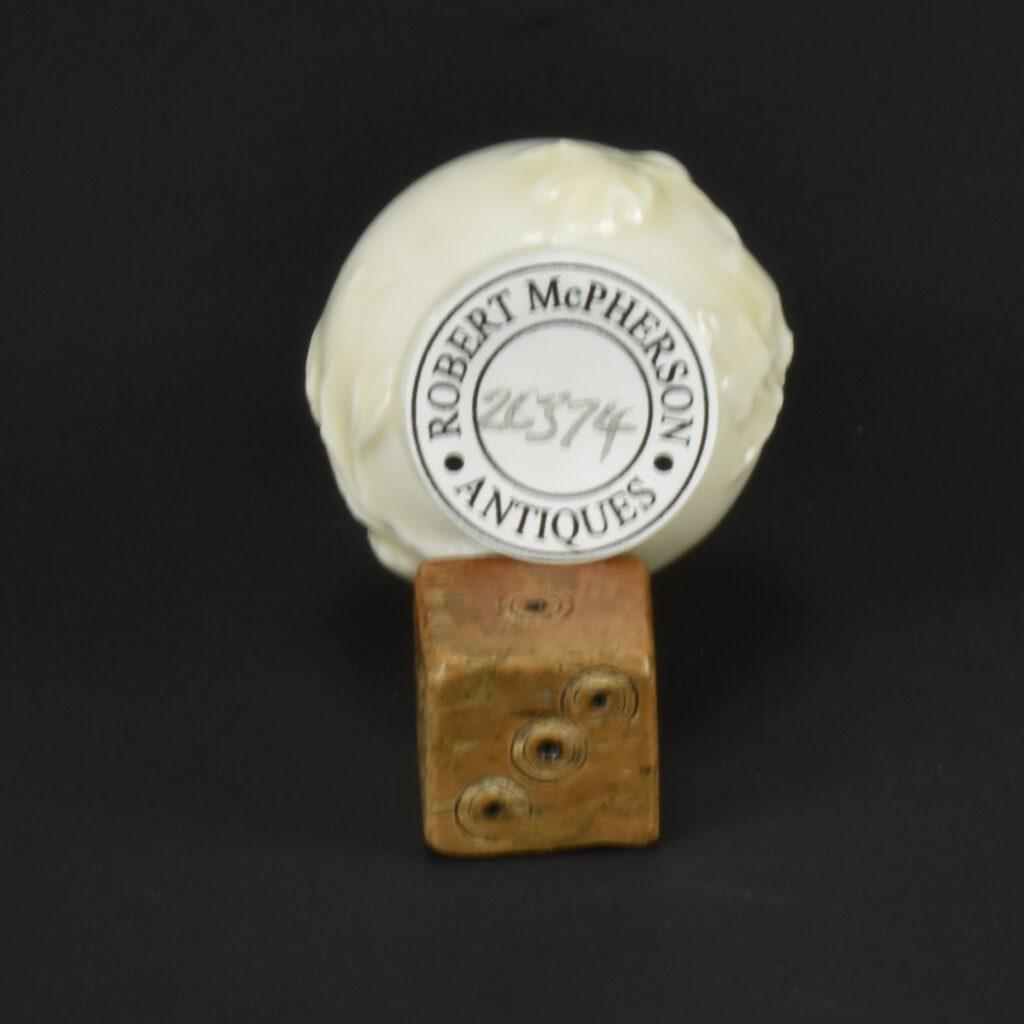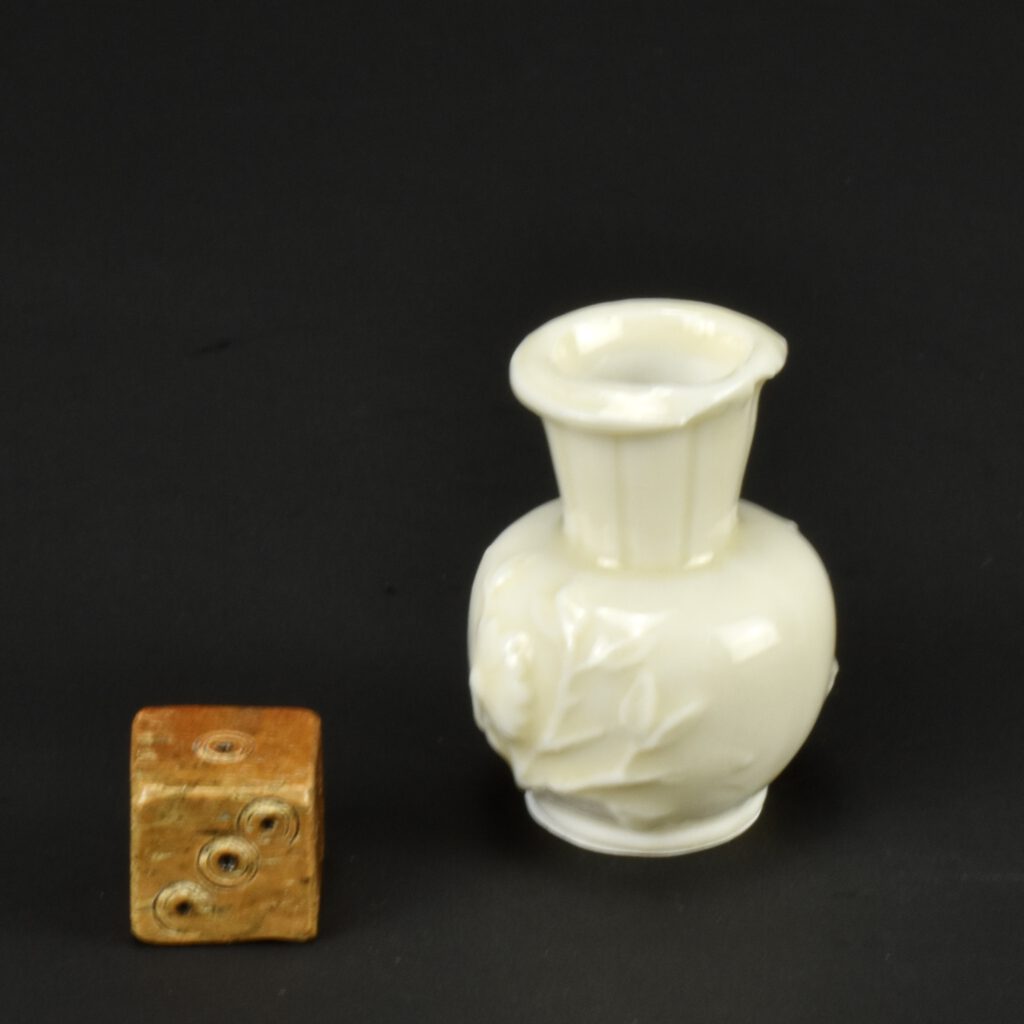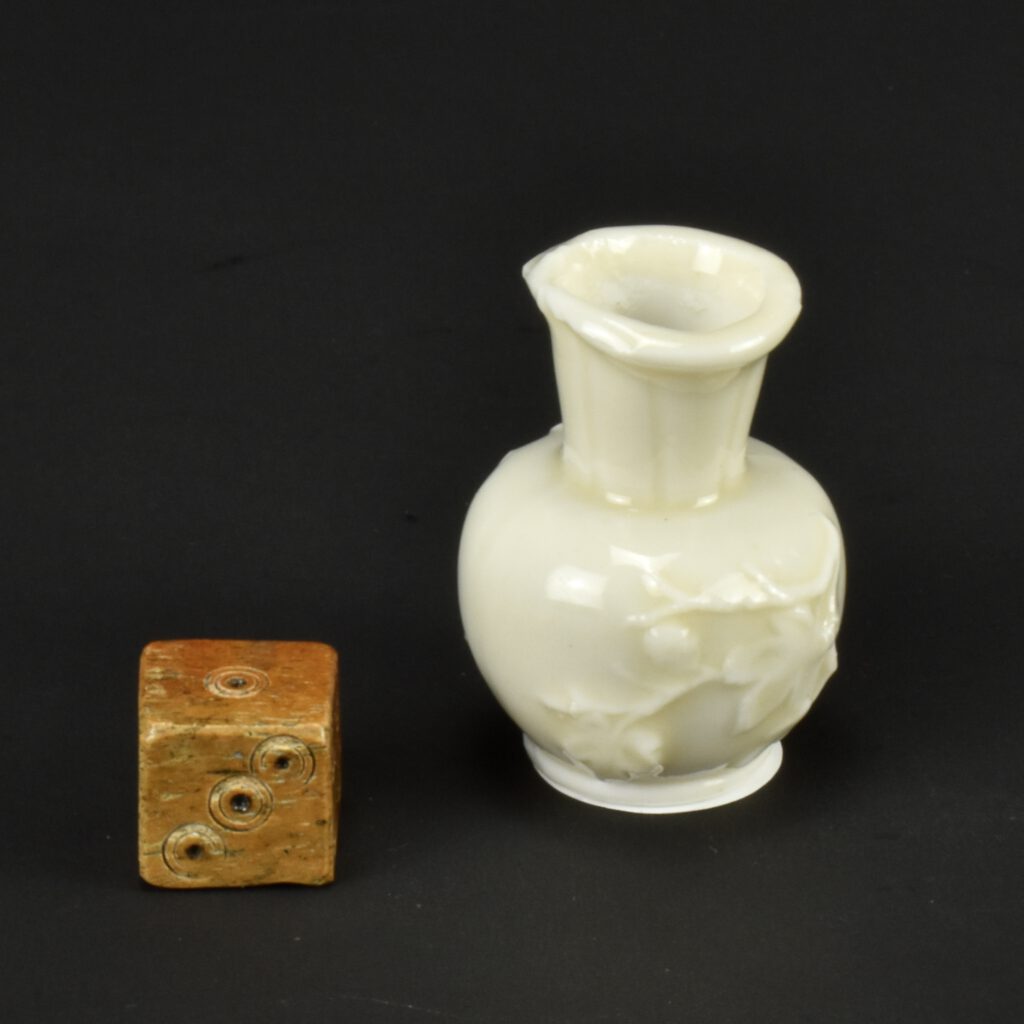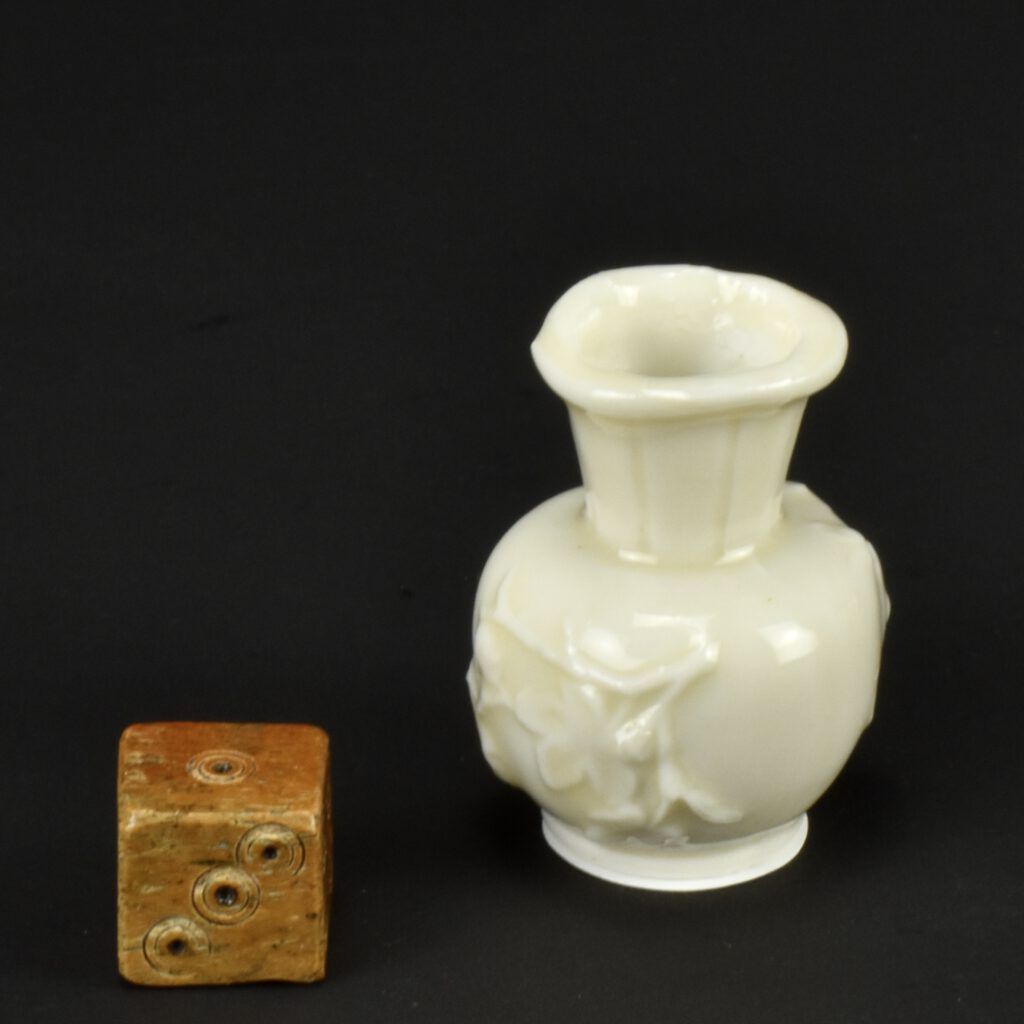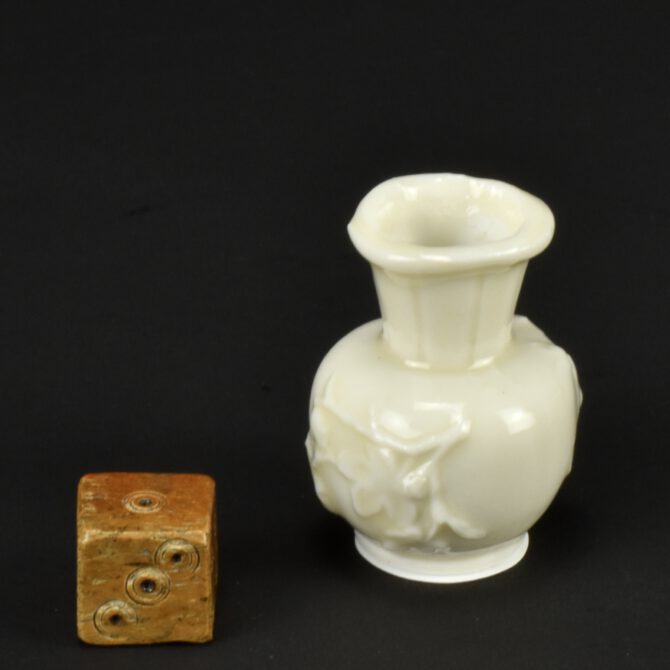
Rare Miniature Kangxi Blanc de Chine Porcelain Vase
Rare Miniature Kangxi Blanc de Chine Porcelain Vase, Dehua Kilns, Fujian Province c.1680 – 1710. The diminutive baluster vase is crisply moulded and has a creamy tone to the glaze. One side seems to represent flowering prunus, while the other is probably magnolia. The neck is incised. Fine quality miniature Blanc de Chine vases are rare.
See Below For More Photographs and Information.
SOLD
- Condition
- In perfect condition, the top is uneven as it was probably picked up when it wasn't dry enough
- Size
- Height 3.4 cm (1 1/3 inches)
- Provenance
- A Private English Collection
- Stock number
- 26374
Information
A Larger Kangxi Blanc de Chine Miniature Vase
Robert McPherson Antiques : Sold Archive - 24580
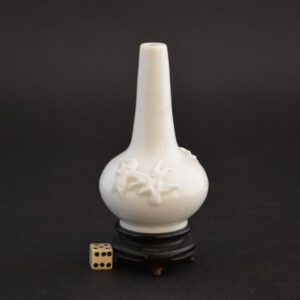
Condition
No damage but the lutting line is slightly visible in places.
Size
Height : 7.5 cm (3 inches)
Provenance
Allan Gibson Hughes (1889-1938) of Chalfont, The Mount, Shrewsbury. "he (Hughes) bought a small group of small monochromes which came from a lot comprising 46 pieces bought by Bluett's at the Richard Cory sale". See : Provenance, Collectors, Dealers & Scholars, Chinese Ceramics in Britain and America (Roy Davids and Dominic Jellinek, Published by Roy Davids 2011. ISBN 978-0-9570148-0-0) page 245.
Stock number
24580
References
Allan Gibson Hughes (1889-1938) of Chalfont, The Mount, Shrewsbury. "he (Hughes) bought a small group of small monochromes which came from a lot comprising 46 pieces bought by Bluett's at the Richard Cory sale". See : Provenance, Collectors, Dealers & Scholars, Chinese Ceramics in Britain and America (Roy Davids and Dominic Jellinek, Published by Roy Davids 2011. ISBN 978-0-9570148-0-0) page 245.
Blanc de Chine Porcelain :
The porcelain known in the West as Blanc de Chine was produced 300 miles south of the main Chinese kiln complex of Jingdezhen. The term refers to the fine grain white porcelain made at the kilns situated near Dehua in the coastal province of Fujian, these kilns also produced other types of porcelain. A rather freely painted blue and white ware, porcelain with brightly coloured `Swatow` type enamels as well as pieces with a brown iron-rich glaze. However it is the white blanc de Chine wares that have made these kilns famous. The quality and colour achieved by the Dehua potters was partly due to the local porcelain stone, it was unusually pure and was used without kaolin being added. This, combined with a low iron content and other chemical factors within the body as well as the glaze, enabled the potters to produce superb ivory-white porcelain.
Plum Blossom Meihua
Plum (Prunus), Meihua, is one of the most important plants in Chinese art. Their flowers grow on knurled old angular branches, the flowers are fragile and pure, so they can be a symbol of vigour in old age as well as purity. The tree is the first to flower after the long hard winter, symbolically it can represent perseverance as well as renewal. This meaning is enhanced by a background of cracked-ice, the design can be seen as representing the end of winter and the beginning of spring with the ice of winter cracking to reveal a new year dawning. Branches of plum blossom convey the `Five Blessings` Meikai wufu, longevity, wealth, health, love of virtue and a peaceful death. The number five, an auspicious number to the Chinese, is taken from the five petals of the plum flower.
Small China, Early Chinese Miniatures
By Koos de Jong
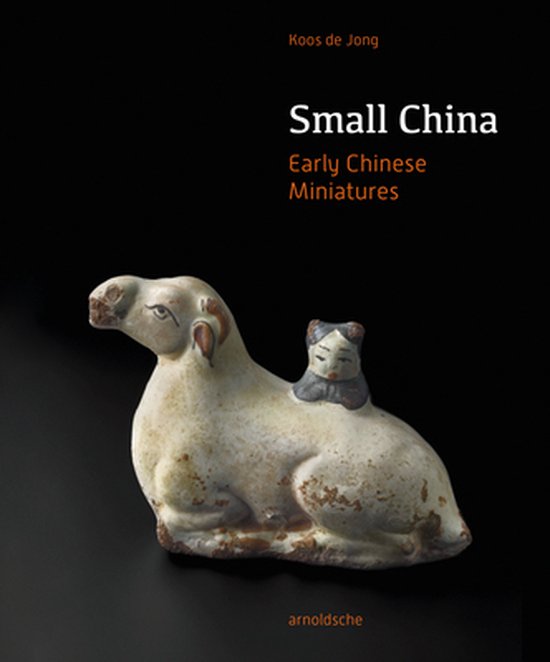
Small China presents Chinese miniatures from 5,000 BC up to the 15th century. The pocket size representations of supernatural beings, people, animals, or everyday objects are virtually uncharted in East Asian crafts – even in China, these objects in jade, bronze, ivory, and porcelain are little known. Koos de Jong explores their arcane meanings and traces their production and the market for such treasures, which, contrary to official secular and religious art, include those devoted to taboo subjects such as erotica or humour. The miniatures had many different functions, from insignia, fetishes and devotional objects to burial gifts or toys. They could express good wishes or even serve as bribes. A rare glimpse into the everyday life of ordinary people and into Chinese handicrafts from thousands of years ago.
